10 Black Conservationists Who Made History
August 17, 2021
We’ve been entrusted with a planet that’s full of diverse plant and animal life, but it takes effort from all of us if we want to keep it that way. Development, population growth, and climate change all threaten a wide range of life on this planet. Conservationists devote their professional careers to combatting these threats.
Within the world of conservation, there’s a long history of Black and African American contributions across several centuries. Below we offer a look at 10 Black conservationists who made history—or who are making it right now.
1. Rue Mapp
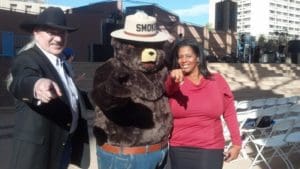
Rue Mapp, founder of Outdoor Afro
Mapp is the CEO and founder of Outdoor Afro, a community-based organization that helps people (with a focus on Black America) develop positive connections with nature. Mapp helps us all see the big picture and better understand the issues so that public lands become protected, ensuring the availability of nature and natural resources for future generations.
Mapp is also an author with work published in leading news outlets, and she has received a National Wildlife Federation Communication award. She has been a member of the California State Parks Commission and is a National Geographic fellow.
For her tireless work instilling a love for the outdoors among communities that have sometimes lacked connection and even access, Rue Mapp is inspiring a new generation of conservation-minded people.
2. Peggy Shepard
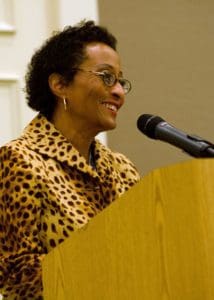
Photo by Dave Brenner
Shepard co-founded We Act For Environmental Justice (WAFEJ) in New York. Through Shepard’s influence, WAFEJ helps address environmental protection and environmental health policy issues, including ecological health, both within the local Northern Manhattan community and nationally. The organization partners with people of color and low-income populations, working to ensure that healthy environments are available to everyone.
Shepard’s work surrounding environmental justice in urban communities has been significant, earning her a range of accolades.
3. Solomon Brown
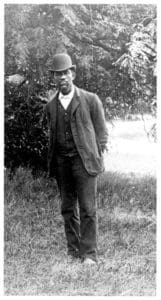
Solomon Brown
Solomon Brown, with us from 1829 until 1906, was a beautiful example of what it means to be a conservationist. After living through the Civil War era as a free Black man, Brown eventually became the first Black employee of the Smithsonian Institute.
Though he had no formal education, Brown was a passionate learner who taught himself about natural history. He wrote and documented the experience of being free during the Civil War and, later in life, gave informative talks at the Smithsonian. He is highly decorated and honored on the national level.
4. Colonel Charles Young
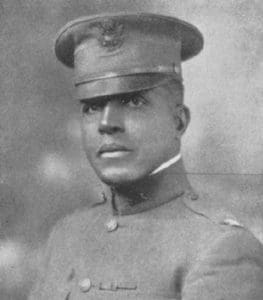
Colonel Charles Young
Born in 1864, Young was the child of slaves who would grow up to graduate from West Point. Conservationism came to him through his service in the armed forces and would remain a part of his legacy even after his death in 1922.
Young became the first Black superintendent of a national park when he and his army unit took on the stewardship of the Sequoia National Park located in Northern California. His thoughtfulness regarding this beautiful park helped educate the local community, adding to his enduring legacy. With the help of the locals he taught, Young improved the natural oasis by reducing poaching of animals, deterring illegal logging, and reducing illegal sheep grazing within the park.
Young saw the importance of Sequoia National Park and its relationship to the valleys and health of local communities. He is an example of a person changed by nature to see its value beyond dollars and cents.
5. Abraham Lincoln Lewis
Lewis, who lived from 1865 until 1947, was a successful businessman who founded the Afro-American Life Insurance Company and realized great financial success throughout his life. With his wealth, he created many recreational and social opportunities for African Americans in the still-segregated south.
One of these ambitious projects was American Beach, which remains on the National Register to this day. Many beaches in Florida did not allow cultural mixing and were closed to African Americans. But more than simply creating a beach that was open to Black Americans, Lewis created an entire beachfront community. American Beach thrived for several decades as a safe and affordable vacation spot for Black families, and the beachfront was preserved thanks to Lewis’s philanthropy.
6. George Washington Carver
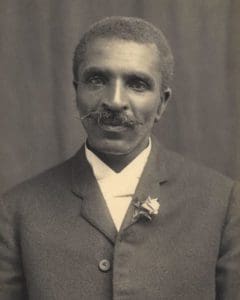
George Washington Carver
Carver was born a slave but found a love in science. He is most known for promoting peanut plants as a crop and as a proponent of the plant’s ability to regenerate soil health and nutrient levels. Carver’s legacy, however, went far beyond peanuts.
Carver understood the natural cycles of plants and was able to educate farmers on topics such as crop rotation, soil health, and more. During his time, the South was in poor condition due to overfarming and the soil overtaxed. Without massive amounts of fertilizer (which was quite scarce), most southern farms would not thrive.
Carver discovered and then taught healthier farming techniques, primarily through using the peanut to replenish soil health and through crop rotation practices. In this way, he created positive change in the economy and, ultimately, in the health of communities worldwide through the implementation of more sustainable farming practices.
7. Lisa Perez Jackson
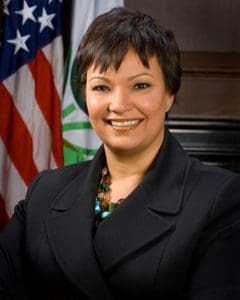
Lisa Perez Jackson
Jackson is the first African American woman to be named as the administrator of the Environmental Protection Agency (EPA), a position she held during the Obama administration from 2009 until 2013. Her accomplishments during this period were significant, including the development of tighter standards for vehicle fuel efficiency and overseeing the US response to the Deepwater Horizon oil spill. Jackson champions that, for the black community, conservation and environmental concerns are linked to civil rights issues more often than not.
8. Hattie Carthan
Carthan lived most of her adult life in Brooklyn, New York, until her death in 1984. She founded Tree Corps to teach younger generations the importance of caring for trees. Her efforts focused on urban green zones, a mission that grew from watching the tree-lined streets of her neighborhood become dotted with dead trees.
After taking it upon herself to replant the lost trees, she saw a need to educate the public about and protect urban green zones. Urban green zones are a gateway to wildlife conservation. They don’t have the same sort of visibility as fighting poaching in the rainforest, but they do protect smaller creatures and build knowledge and respect for the outdoors.
Even in suburban and urban areas, wildlife is essential. And healthy green spaces are essential to wildlife: Consider that a single oak tree can be a resource for over 600 other organisms.
9. President Barack Obama
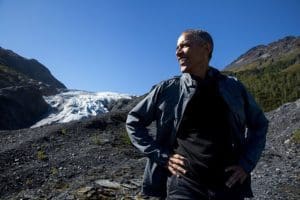
President Barack Obama
President Obama, as our nation’s first black President, had the power to protect vast swaths of land and did exactly that. His additions to national parks, wildlife sanctuaries, and national monuments exceed even what Teddy Roosevelt—the founder of the National Parks system—allocated.
Obama created two very large marine reserves and the second largest desert reserve on the planet. He preserved the most natural habitats of any US president, including marine ecosystems and over four million acres of land, for a total of 22 new parks in the National Park system under his administration.
Obama also oversaw the EPA where Lisa Perez Jackson led the way, so he shares in some of the gains made there. Additionally, he continued and expanded anti-poaching efforts begun under Clinton and Bush.
10. John Francis
Francis is best known as the “Planet walker.” He spent 22 years of his life walking the planet. He witnessed an oil spill in the San Francisco Bay in 1971. He joined volunteers in cleaning beaches and saving birds and sea creatures, seeing the destruction firsthand.
The impact of that destruction led Francis to understand the need for educating communities about the use of fossil fuels. To that end, he chose to walk rather than ride in a vehicle to show and teach the world about environmental protection.
Later, he took a vow of silence that lasted 17 years. He has walked and sailed through much of the world—without relying on fossil fuels to do it. His organization provides consultation services on sustainable development practices.
An Enduring Legacy of Black Conservationism
The list of Black people who have stepped up to safeguard the environment is long. It spans the history of this nation through the civil war and into every classroom today. A common thread among these people is dedication.
The idea that nature can change you is real and, as some have shown, wildlife conservation is tied to many other issues, including civil rights. As John Francis said, how we treat each other reflects how we treat the Earth. At Unity College, we promote diversity as an exploration of differences in a safe, nurturing and welcoming educational environment where everyone sees their reflection represented in the artifacts and individuals across the college community.
Unity College: Your Next Step Toward a Career in Conservation
At Unity College, you will have the opportunity to explore wildlife conservation as a career. The hybrid learning programs at Unity College can help to prepare you to enter a wide range of roles in conservation and related fields.
Looking to the Black conservation heroes of the past and even today is inspiring. Thanks to those before you, conservation has preserved species, land, plants, wildlife, and green spaces so that your generation can benefit from the natural world.
If you’re ready to join them in doing your part to continue conserving our world, take the next step at Unity College. Contact us today to learn about the hybrid learning programs we have to offer to help you pursue your conservation goals.



